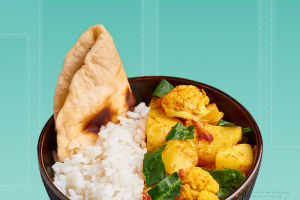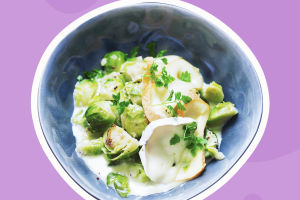In India, small desserts, sweet cakes, candied fruit, etc. are collectively referred to as "mitay". Life is inseparable from Mitay. For example, when relatives and friends are guests at home, no matter how unconventional the appetizers are or how diverse the main dishes are, if there is no dessert after the main dishes, it cannot be called a complete dinner.
1. Gulab Jamun
This is one of the most representative traditional desserts in India, and it is very popular not only in India, but even in Nepal, Pakistan, Bangladesh and other countries. In Hindi, "gulab" means rose and "jumun" is fruit. This dessert is very common in Indian festivals and weddings.
Gulab Jamun, also often referred to as an Indian doughnut, is actually a small ball of milk. The milk balls are coated in syrup and then flavored with saffron, rosewater and cardamom for a rich aroma. It has a silky and creamy texture, but the taste is not very mild.
2. Rasgulla
Although this white ball looks a bit similar to Chinese dumplings at first glance, it is actually quite different. The main ingredient of Rasgulla is to boil the milk, add acidic substances, such as lemon, and stir well to separate the solid substances in the milk into lumps and separate them from the water.
Strain the water with a cloth and squeeze as much as possible to form a milk residue. In order to increase the adhesiveness of the milk residue, a little arrowroot starch is often added to it, and then rolled into glutinous rice balls and boiled in high-concentration sugar water.
Therefore, the sweetness is absolutely five-star! Of course, according to Different places have different tastes, and you can also add other things, such as some fruit, to the balls during the kneading process. As for the taste, if it is a bit more vivid, it is probably like chewing a semi-dry milk-flavored sponge.
3. Kaju katli
In Hindi, "Kaju" means cashews and "Katli" means flakes. Its price is a little expensive compared to other desserts, because its most important ingredient is cashew nuts as the name suggests. It is not uncommon to add silver and gold foil to desserts, and the most common of these are festive desserts.
These shiny silver foils are purely decorative and have no flavor. However, it should be noted that there are still some unscrupulous merchants in India who use metals such as aluminum or platinum that are harmful to health to pretend to be edible silver foil.
4. Indian Shrikhand
It's a creamy dessert made with fermented yogurt and topped with cardamom, nuts and saffron. It is usually served with bread after being refrigerated. Its taste is sweet and sour, which is very suitable for hot summer.


